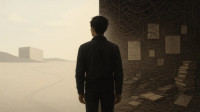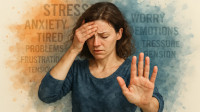In This Article
- Why aging can speed up — and how to slow it down
- Blue Zones principles adapted for an independent lifestyle
- The safest and most effective exercises for older adults
- How to eat for longevity without breaking the bank
- Creative ways to build community without being in a crowd
Tips For Healthy Aging After 80
by Robert Jennings, InnerSelf.comThere was a moment in my seventies when you notice the game has changed. My body doesn’t bounce back the way it did. Wrinkles appear faster, stamina feels thinner, and the calendar pages flip with unnerving speed. That’s not just “getting old”—it’s the natural acceleration of aging that happens when muscle mass, bone density, and cell repair all begin to slide at once. But acceleration works both ways. Just as bad habits can speed decline, good habits can slow it down, sometimes dramatically.
Physiologists will tell you it’s about maintaining muscle, keeping blood vessels flexible, and supporting the mitochondria—the tiny power plants in your cells. But the truth is simpler: you have to make yourself just a little uncomfortable every day. That’s how the body knows it’s still needed. Sitting in the recliner, watching the news, and shaking your head at “the state of the world” sends exactly the opposite message to your biology: we’re done here. Time to pack it in. And that’s when the decline goes from gentle to steep.
Lessons from the Blue Zones
The Blue Zones—those pockets of the world where people routinely live past 90 in good health—don’t owe their longevity to genetic lottery tickets alone. Sure, you might have inherited the long-life gene from your mother or grandmother, but genes are only the script. You still have to act it out. And the people in Sardinia, Okinawa, Ikaria, Nicoya, and Loma Linda all act it out the same way: they keep moving, they eat real food, they stay engaged in their communities, and they don’t obsess over aging.
Here’s where the “loner problem” comes in. Many in the Blue Zones live in tight-knit social webs. You might not have that naturally, especially if you prefer solitude. But you can create micro-connections—regular interactions with shopkeepers, neighbors, or even an online discussion group that feels real. Community doesn’t have to mean potluck suppers or daily coffee klatches. It can be as simple as a weekly ritual of calling an old friend, tending a community garden, or attending a class. The key is to signal to your brain—and your body—that you still belong to the human fabric.
Exercise for Longevity—Without Becoming a Gym Rat
If the idea of a fitness boot camp makes you want to run for the hills (or more likely shuffle toward the couch), good news: the Blue Zones model is based on constant low-intensity movement and occasional muscle use. Think of it as anti-exercise exercise. Gardening, walking up hills, carrying groceries in both hands, squatting to pick something up—all these movements keep joints lubricated and muscles alive.
That said, past age 80, you need targeted strength work to fight the inevitable muscle loss called sarcopenia. The biceps, triceps, shoulders, hips, and core are the “big five” areas that keep you upright and independent. Two or three 15-minute strength sessions a week—using light weights, resistance bands, or even body weight—will remind your muscles they’re still on the payroll. And here’s the psychological trick: make it a ritual. If it’s Tuesday at 10 a.m., it’s not “maybe I’ll work out.” It’s “I train my arms and shoulders now, period.”
Diet That Supports Healthy Aging
Blue Zones diets share one thing: they’re not built on processed food. Beans, whole grains, vegetables, fruits, nuts, and small amounts of meat or fish form the backbone. At 80, your protein needs actually increase to help maintain muscle and repair tissues. If you think of protein only in terms of steaks and chops, you’re missing the budget-friendly sources: lentils, chickpeas, eggs (in moderation), sardines, and Greek yogurt.
Healthy fats from walnuts, olive oil, and fatty fish keep cell membranes supple, while fiber-rich vegetables keep digestion moving and the gut microbiome happy—an underrated factor in longevity. And let’s talk about hydration: mild dehydration is common in older adults and accelerates everything from wrinkles to fatigue. Reverse osmosis water, herbal teas, and even soups can fill the gap without flooding your system with sugar or caffeine.
Keeping the Mind Sharp
The mind, like the body, responds to challenge. Doing crosswords and reading the paper might keep you busy, but novelty is what really lights up the brain. Learn a new language, pick up a musical instrument, or tackle a subject you’ve never touched before—economics, astrophysics, or ancient history. The effort of grappling with something unfamiliar forces your neural circuits to rewire and strengthen.
Purpose is another mental anchor. In Okinawa, they call it “ikigai”—a reason to get out of bed in the morning. That purpose can be as grand as writing a book or as simple as tending plants. Without purpose, the brain gets the same message the body does when it’s idle: “We’re winding down.” With purpose, every system stays on alert.
Social Well-being for Loners
You don’t need to be the life of the party to reap the benefits of connection. Even small doses of social interaction buffer against cognitive decline and depression. A weekly volunteer shift, a recurring phone call, or joining an interest-based club online can mimic the community effect found in the Blue Zones. The trick is consistency—making sure those connections happen regularly enough to feel like part of your life, not a once-in-a-blue-moon event.
And yes, you might have to push past mild discomfort to make these happen. That’s okay. Discomfort is a sign you’re stretching—literally the same principle as lifting a slightly heavier weight than you did last week.
Living as if Every Day Matters
Here’s the secret the Blue Zones don’t put in the brochure: they’re not living long because they’re chasing life extension. They’re living long because they’ve made peace with daily life. They accept the limits of their bodies, work with them instead of against them, and keep showing up for the small stuff—meals, walks, conversations, chores—as if each mattered. That’s the real longevity trick. The rest—genes, climate, luck—is just set dressing.
So here’s the quiet pivot: if you live each day as if it’s worth your full presence, the years take care of themselves. And presence doesn’t mean grand gestures. It means noticing the sunlight on your morning walk, savoring the taste of a perfectly ripe peach, or laughing—really laughing—at a good joke. You can’t bottle that. But you can choose it, over and over, until it becomes your life’s rhythm.
About the Author
 Robert Jennings is the co-publisher of InnerSelf.com, a platform dedicated to empowering individuals and fostering a more connected, equitable world. A veteran of the U.S. Marine Corps and the U.S. Army, Robert draws on his diverse life experiences, from working in real estate and construction to building InnerSelf with his wife, Marie T. Russell, to bring a practical, grounded perspective to life’s challenges. Founded in 1996, InnerSelf.com shares insights to help people make informed, meaningful choices for themselves and the planet. More than 30 years later, InnerSelf continues to inspire clarity and empowerment.
Robert Jennings is the co-publisher of InnerSelf.com, a platform dedicated to empowering individuals and fostering a more connected, equitable world. A veteran of the U.S. Marine Corps and the U.S. Army, Robert draws on his diverse life experiences, from working in real estate and construction to building InnerSelf with his wife, Marie T. Russell, to bring a practical, grounded perspective to life’s challenges. Founded in 1996, InnerSelf.com shares insights to help people make informed, meaningful choices for themselves and the planet. More than 30 years later, InnerSelf continues to inspire clarity and empowerment.
Creative Commons 4.0
This article is licensed under a Creative Commons Attribution-Share Alike 4.0 License. Attribute the author Robert Jennings, InnerSelf.com. Link back to the article This article originally appeared on InnerSelf.com
books_
Article Recap
Healthy aging isn’t about denying your years—it’s about using them well. With steady exercise, a nourishing diet, mental engagement, and micro-connections, even an independent soul can adopt the longevity tips proven in the Blue Zones. By living each day fully, you can slow aging’s pace and give both your body and mind a reason to keep showing up strong.
#HealthyAging #LongevityTips #BlueZonesLiving #ActiveMind #HealthyLifestyle #VitalityAtAnyAge #HealthyOver80 #AgingGracefully #FitnessForSeniors #MindBodyLongevity



